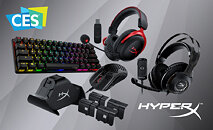
Xbox Giving Away One-of-a-Kind Fallout Vault Box
Xbox and Fallout fans, rejoice! Today, we are thrilled to announce a striking collaboration between Xbox and new series on Prime Video "Fallout", premiering on April 11. Introducing the Xbox and Fallout Vault Box—a custom collaboration that combines the rugged essence of the Fallout universe with the unparalleled security of a Fort Knox vault. Based on one of the greatest video game series of all time, "Fallout" is the story of haves and have-nots in a world in which there's almost nothing left to have. Two-hundred years after the apocalypse, the gentle denizens of luxury fallout shelters are forced to return to the irradiated hellscape their ancestors left behind—and are shocked to discover an incredibly complex, gleefully weird, and highly violent universe waiting for them.
The series comes from Kilter Films and executive producers Jonathan Nolan and Lisa Joy. Nolan directed the first three episodes. Geneva Robertson-Dworet and Graham Wagner serve as executive producers, writers and co-showrunners. The series stars Ella Purnell (Yellowjackets), Aaron Moten (Emancipation) and Walton Goggins (The Hateful Eight). Athena Wickham of Kilter Films also executive produces along with Todd Howard for Bethesda Game Studios and James Altman for Bethesda Softworks. Amazon MGM Studios and Kilter Films produce in association with Bethesda Game Studios and Bethesda Softworks.
The series comes from Kilter Films and executive producers Jonathan Nolan and Lisa Joy. Nolan directed the first three episodes. Geneva Robertson-Dworet and Graham Wagner serve as executive producers, writers and co-showrunners. The series stars Ella Purnell (Yellowjackets), Aaron Moten (Emancipation) and Walton Goggins (The Hateful Eight). Athena Wickham of Kilter Films also executive produces along with Todd Howard for Bethesda Game Studios and James Altman for Bethesda Softworks. Amazon MGM Studios and Kilter Films produce in association with Bethesda Game Studios and Bethesda Softworks.























































